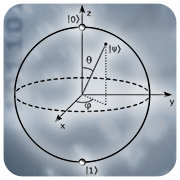
Scientists in China have transmitted quantum bits, or qubits, over a record distance of 97 km, or roughly 60 miles.
This is more than six times the distance of the previous record of 16 km, set by another team of Chinese researchers in May of 2010, as reported in Nature.com.
The results represent a step toward the establishment of a global quantum network, and the methods used in the experiment could be utilized for satellite-based quantum communications, the scientists said.
“This is just a transmission method, so it could have wide utility, though I expect the cost will initially make it best for huge data streams,” Rob Enderle, principal analyst at the Enderle Group, told TechNewsWorld.
This technology “could end up changing much of the world” because it’s both potentially higher bandwidth and lower latency, approaching zero, and these factors “could drive massive computer centralization on a world scale and force a massive shakeout of security, networking and computer companies,” Enderle continued. “Something like this could turn us into a SaaS (Software as a Service) world.”
The Theory Behind the Experiment
The latest experiment demonstrated quantum teleportation of an independent unknown state between two optical free-space links 97 km apart with multi-photon entanglement.
Quantum teleportation is a process for transmitting information using quantum physics to, in effect, encrypt the data transmitted. It’s also known as entanglement-assisted teleportation.
In quantum teleportation experiments, beams of lights are used to encode qubits. The encoded beam of light, which is described as quantum entangled, is split into two and transmitted. When a qubit at one receiver is observed and take a defined form, the other half of the qubit at the other receiver takes the same defined form.
Quantum entanglement results when particles such as photons or electrons interact physically and then become separated but remain in the same quantum state. A quantum state is a set of mathematical variables, including position, momentum and spin, that fully describes a quantum system.
What the Researchers Did
The researchers used an ultra-bright entangled photon source based on Type-II spontaneous parametric down-conversion (SPDC). The SPDC process involves using a non-linear crystal to split photons into two. Those photons in a pair whose polarizations are perpendicular to one another are termed “Type II” photons.
In an SPDC apparatus, a strong laser beam, called the “pump” beam, is directed at a beta-barium borate (BBO) crystal. That’s exactly what the researchers did. This generated the beam of light, which was split and sent across Lake Qinghai in China.






















































Physicists do not have a conceptual explanation for this effect. They have only the math from an abstract mathematical wave function. For people who want a better conceptual understanding, I recommend reading:
http://scripturalphysics.org/qm/qmconcpt.htm#EPR
For the space travel implications, I recommend:
http://scripturalphysics.org/4v4a/ADVPROP.html#GeometrySpaceTimeMotion